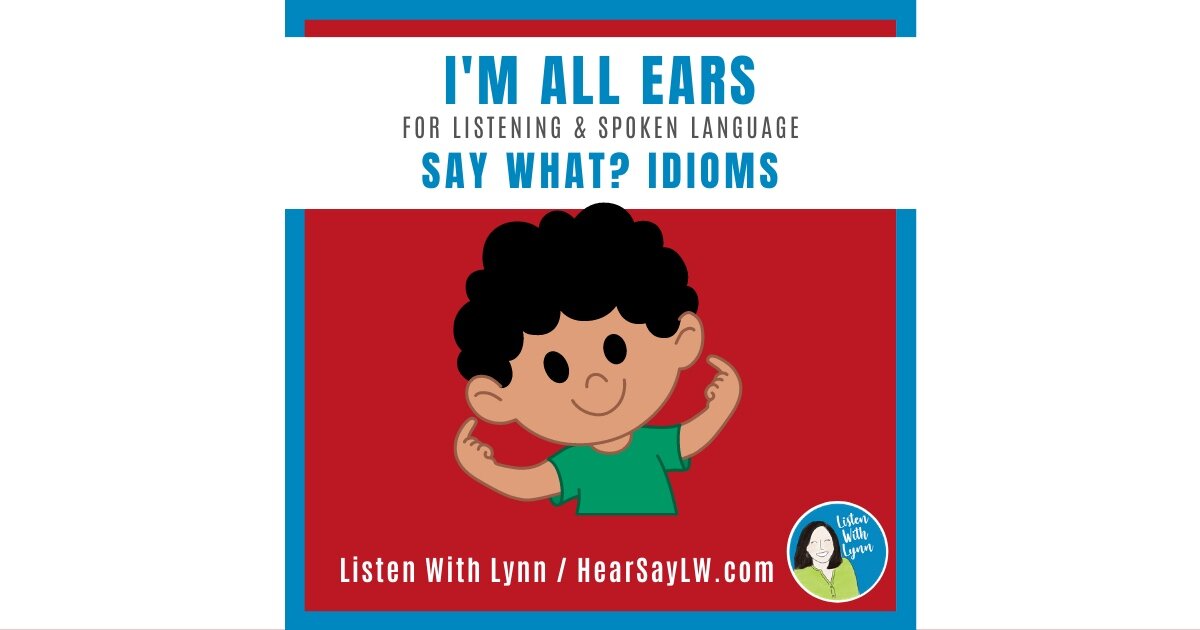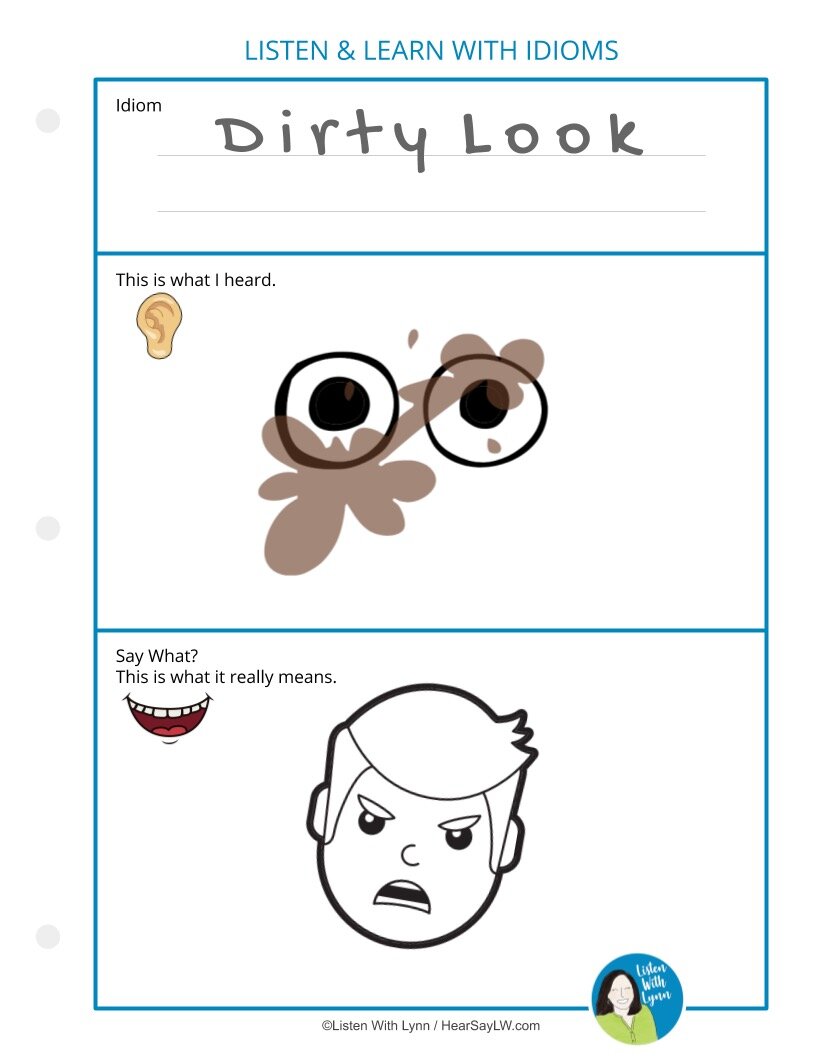The I’m All Ears resource makes teaching idioms a piece of cake. Teaching idioms may seem intimidating at first. It doesn’t have to be complicated or difficult. There is step by step teaching suggestions for starting simple and how to spend time explaining the figurative language of idioms.
I’m All Ears is a well-loved, humorous listening and language bookmaking activity. Children listen to a given idiom then draw a picture of what they literally heard. Say What? An idiom is a saying that has a meaning that is different from its literal words. To a child, the "laugh out loud" drawings in their book are a source of humor, fun but are brain-building opportunities. The DIY books help children understand and use idioms spontaneously. This activity builds vocabulary, expands high-level language skills of figurative language, word relationships, and nuances in word meanings. Understanding and using all types of figurative language plays an essential role in spoken and written language, pragmatics, and communication competence.
Children with typical hearing, learn idioms through incidental exposure without having to be taught. Whereas, children who are deaf and hard of hearing often require explicit and direct instruction especially with higher-level language like idioms. Idioms are challenging for children that process information literally and have a concrete or limited vocabulary.
This resource has easy to follow step by step suggestions for incorporating idioms into therapy or academic lessons. Included are the following -
TWENTY idiom activity sheets are included to begin the I’m All Ears DIY books.
NO PREP - Print a set for each child, open on an iPad drawing app or share the PDF in teletherapy.
Listening and Spoken Language (LSL) Tips
Ensure optimal access to sound with the child's hearing devices which is essential for overhearing. Research indicates that ninety percent of learning takes place incidentally.
Idioms are abstract. Teach with real experiences for new vocabulary to stick.
Provide lots of exposure to the targeted idiom in multiple contexts.
Say the idiom (In one ear and out the other.) then WAIT. Give the child time to process what they heard.
Use the child’s Auditory Feedback Loop by asking what they heard before repeating the idiom.
Teach the idioms in complete sentences. This allows for learning how the idiom relates to other grammatical structures as part of an auditory mental map.
Read aloud daily. Books introduce unusual vocabulary like idioms that may not come up every day but are important for the child to have in their repertoire.
Laugh at the humor!





